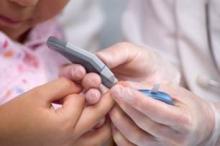The overall death rate from diabetes in children aged 19 years and younger dropped by 61% from 1968 to 2009, according to data from the National Vital Statistics System. The findings were published online Nov. 1 in the Centers for Disease Control and Prevention’s Morbidity and Mortality Weekly Report.
The overall death rate decrease was 78% in children younger than 10 years and 52% in those aged 10-19 years. A steady decrease occurred in children younger than 10 years from 1968 to 1995 (annual percentage change [APC] of 5.7), with a slightly slower decline from 1995 to 2009 (APC, 0.3). However, the decrease in death rates in youth aged 10-19 years from 1968 to 1984 (APC, of 6.5) was followed by an increase between 1984 and 2009 (APC, 1.6).
"The prevalence of diabetes among youths is determined by a number of factors, including the incidence of new cases and the number of deaths among youth with diabetes," the researchers noted.
"The findings in this report that the overall death rate from diabetes has decreased among U.S. youths aged 19 years and younger might contribute to an overall increase in prevalence of diabetes among youths," they said.
Most diabetes deaths in children and teens are due to acute complications including ketoacidosis and hypoglycemia, and these conditions are preventable, the researchers said. Possible reasons for the decline in diabetes deaths include improvements in treatment, increased identification of diabetes symptoms, and better education about managing diabetes and its complications, they added.
Diabetes-related mortality was determined using data from death certificates filed in all 50 states and the District of Columbia. U.S. census data were used as denominators (MMWR 2012;61:869-72).
The study findings were limited by the lack of distinction between type 1 and type 2 diabetes in the ICD-8 or ICD-9 mortality codes reviewed, and by the lack of analysis based on race or geographic region, the researchers said.
Despite the improvement in mortality rates, "deaths resulting from diabetes in youths potentially are preventable, and these findings indicated a need for improved diabetes diagnosis and care, especially among youths aged 10-19 years, whose risk for diabetes-related mortality appears to have increased in recent years," they said.
The researchers had no financial conflicts to disclose.


